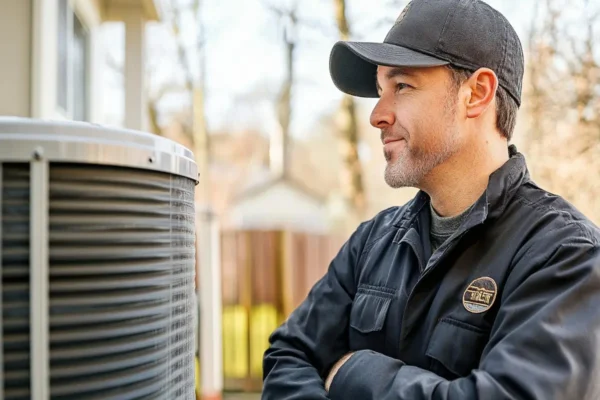If the radon concentration in your home reaches unsafe levels, it may be harmful to your health and the health of others you care about.
Did you know that radon gas is the second biggest cause of lung cancer? Problems with radon are present in one home out of every fifteen in the United States.
To put that into perspective, there have been 20,000 fatalities reported in the United States every single year due to inhaling radon!
The gas should be reduced in any residence in Troy, Michigan, that has a radon level of 4.0 parts per million or above. Considering the severity of a radon leak, you may find yourself looking for radon testing.
Should you get a radon testing kit vs. professional services? Let’s find out.
DIY Radon Testing Kit
To test for radon in your home on your own, you’ll need a radon test kit. These kits usually come with two little containers to collect air samples and a form to send them to a lab for analysis. Here’s how you can perform the test yourself:
- Get the Kit: Buy a radon test kit—it’ll have everything you need, including instructions and where to send the samples.
- Prepare: Close all windows and doors for at least 12 hours before you start the test. This helps get accurate results.
- Place It Right: Put the kit in the lowest livable part of your home, like a basement. It should be about 20 inches above the ground and in a spot where it won’t be messed with.
- Let It Sit: Leave the kit alone for about 2 to 4 days, as the instructions say. Keep windows and doors shut during this time and try not to use fans or AC units.
- Send It Off: After the time’s up, follow the kit’s directions to seal the samples and send them to the lab. They’ll test it and send you the results later.
You can try doing the radon testing yourself but you should be aware of the challenges it comes with:
- Accuracy Issues: Small things like where you put the kit or leaving a window open can mess up the results.
- Wait Time: It can take a few weeks to get your results back from the lab. So, if you need to know right away, this might not be the best option.
- Not So Simple: You really have to pay attention to all the steps—from sealing your home to putting the kit in the right place. It’s not hard, but you need to do it right.
Even with these things to think about, using a radon test kit yourself can save money and give you a good idea of what’s going on in your home. It’s a good way to start, especially if you’re just checking things out.
If you want results faster or need a more thorough check, pros can do more detailed tests for you. They might cost more, but they can give you quicker answers and more info.
So, DIY radon testing is a handy option, but make sure to follow the steps carefully for the best results. Understanding how it works and its limits can help you decide what’s right for testing radon in your place.
Professional Radon Testing
If you want to do radon tests, you should hire certified radon experts instead of using DIY kits. Because these professionals have the right tools and training, they can do a test that is more thorough and exact than what can be done with the do-it-yourself kits.
Having a professional do radon testing can also help you figure out where the radon gas is coming from and give you information on the many ways to lessen its effects.
The majority of trained radon experts will usually offer a range of testing services, such as both short-term and long-term testing options. It is common for measurements of radon levels to be taken over two to seven days if the short-term testing choice is chosen.
When the long-term testing choice is chosen, radon levels are usually checked for at least ninety days. There are times when long-term testing is recommended to get solid information and a better idea of the radon levels.
Most professional radon testing methods include both passive radon testing and constant radon monitoring. This is true no matter what the company is testing.
It is necessary to use a special tool, like a charcoal canister or an alpha track tracker, for passive radon tests. On the other hand, an electronic monitor that checks and tracks radon levels is almost always needed for constant monitoring.
The technology that qualified radon experts use is something you won’t find at your local home improvement shop. Low amounts of radon can be found with these tools, but most do-it-yourself testing kits would miss them. For that reason, professional radon testing is the best option for people who are really worried about the amount of radon in their homes because the results will be more accurate and reliable.
When comparing a DIY radon testing kit vs. professional testing, it is important to remember that professional testing will give more thorough and useful results. In addition to giving a full picture of the radon levels in the house, it can also pinpoint where the radon is coming from.
But how will you determine which radon testing company is right for your home?
Choosing a Radon Inspection Company in Troy, Michigan
Total House Inspection is your trusted source when it comes to radon testing in Troy, MI. We offer 24/7 Online inspection scheduling, so if you are in a rush, just visit our website and schedule an appointment so we can get started with the radon testing immediately!
No time to waste; put your and your family’s health first.
Contact us now.









